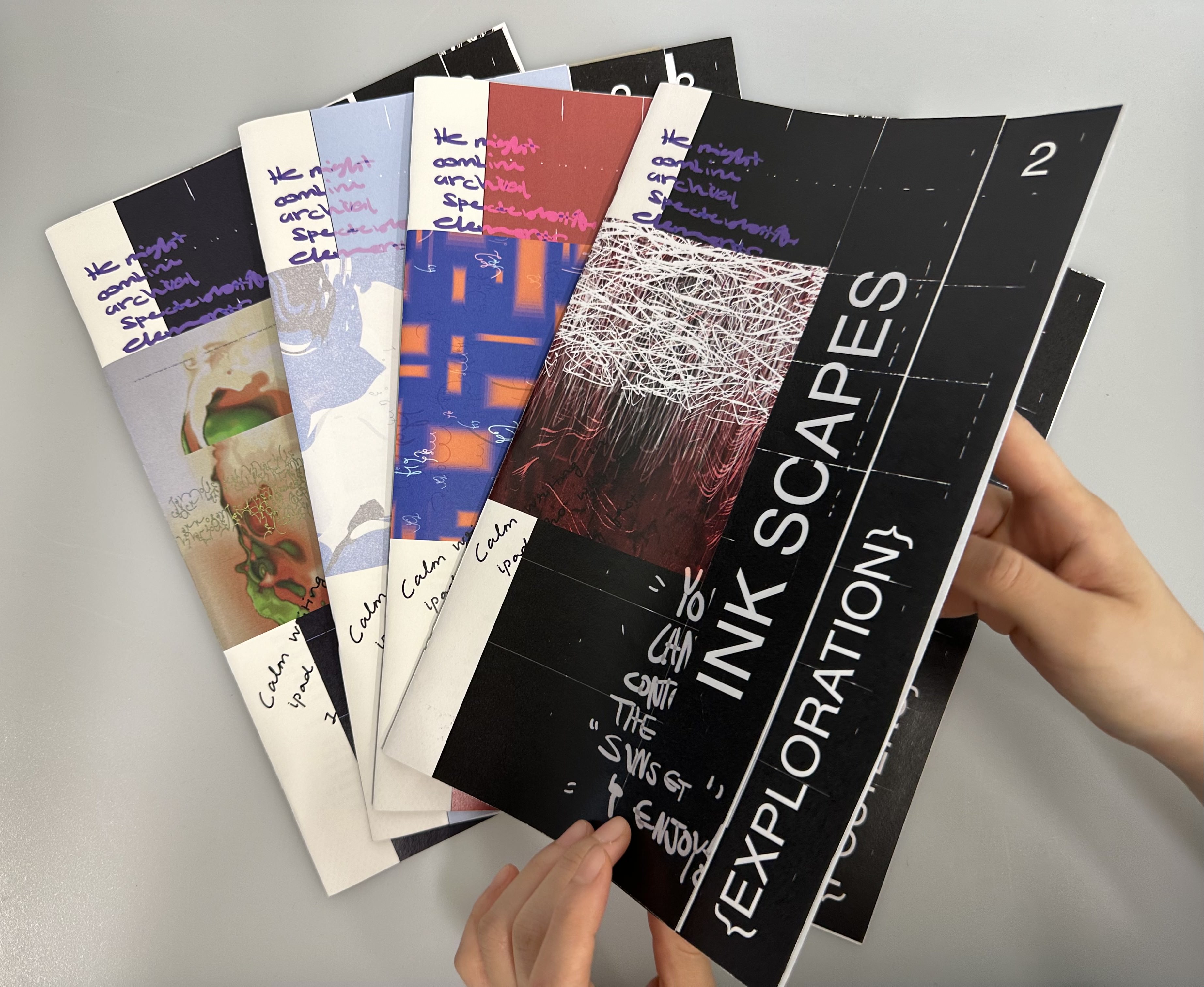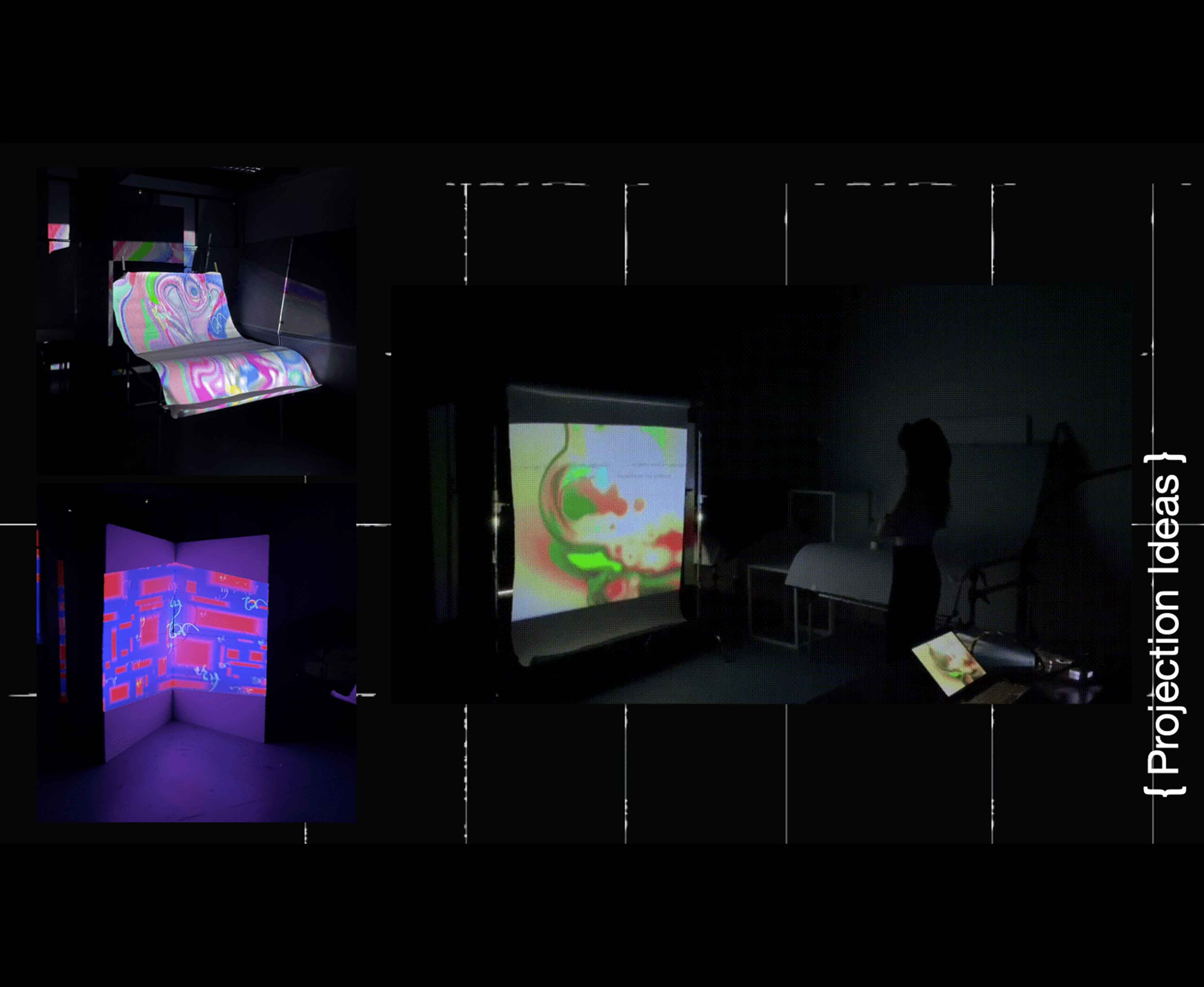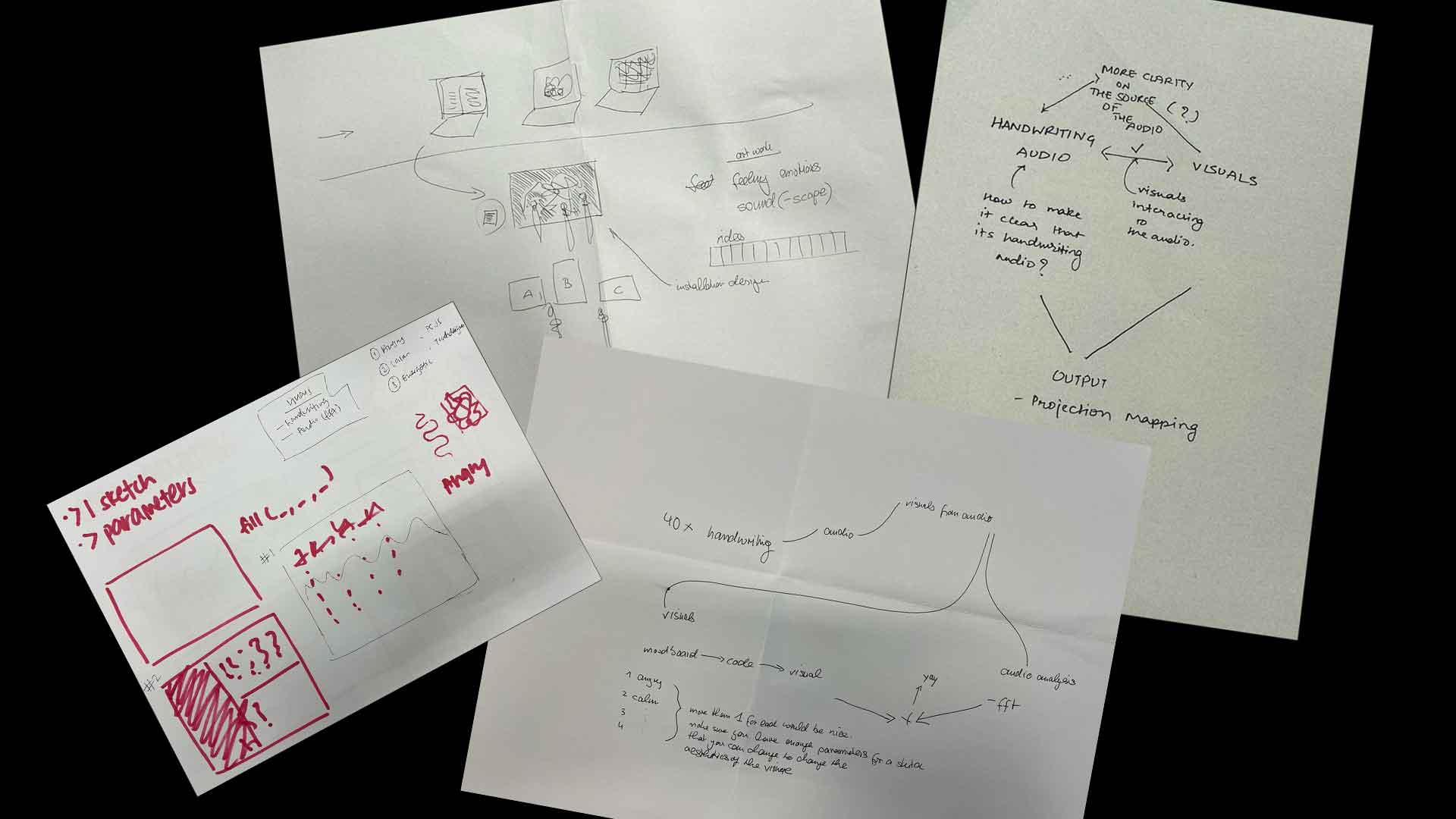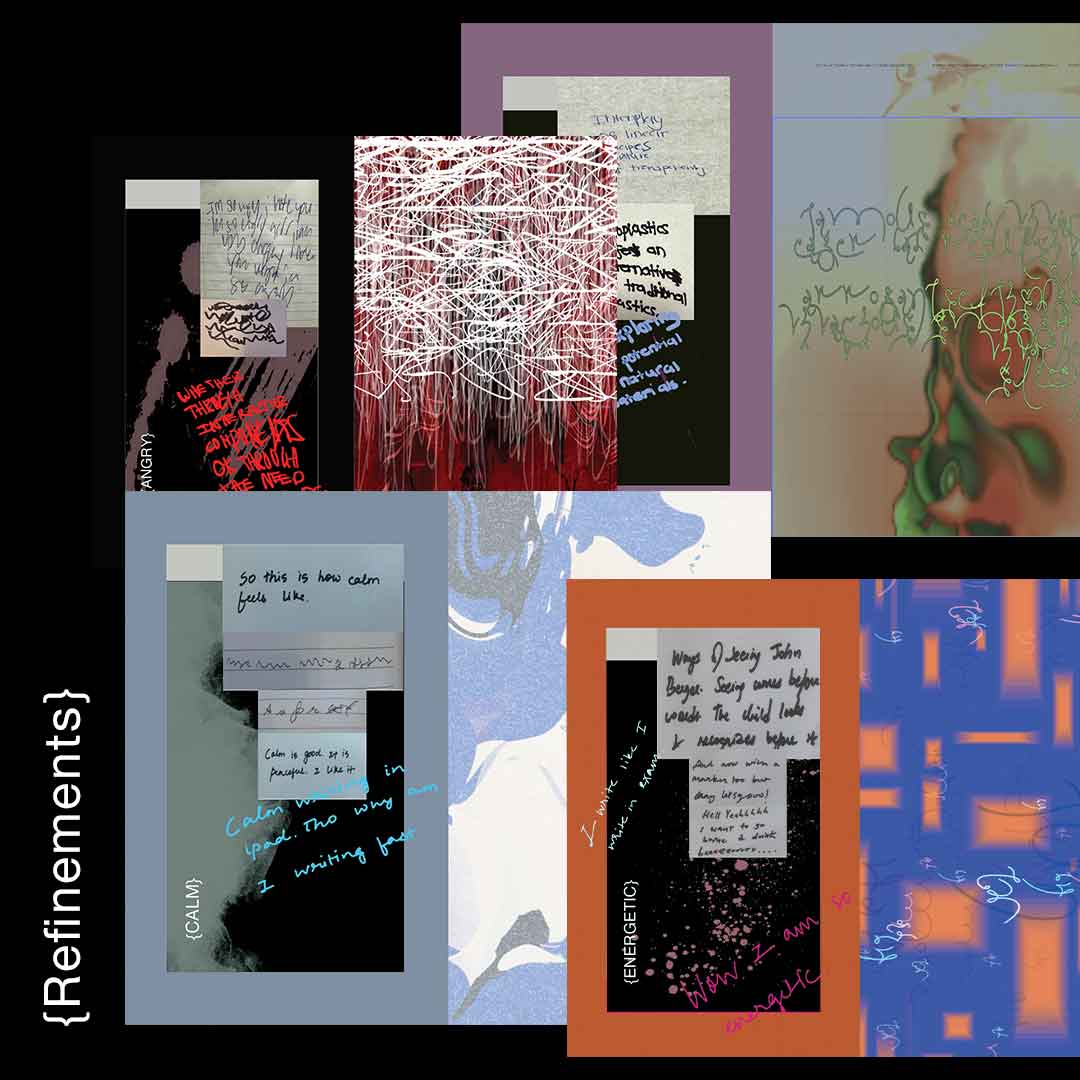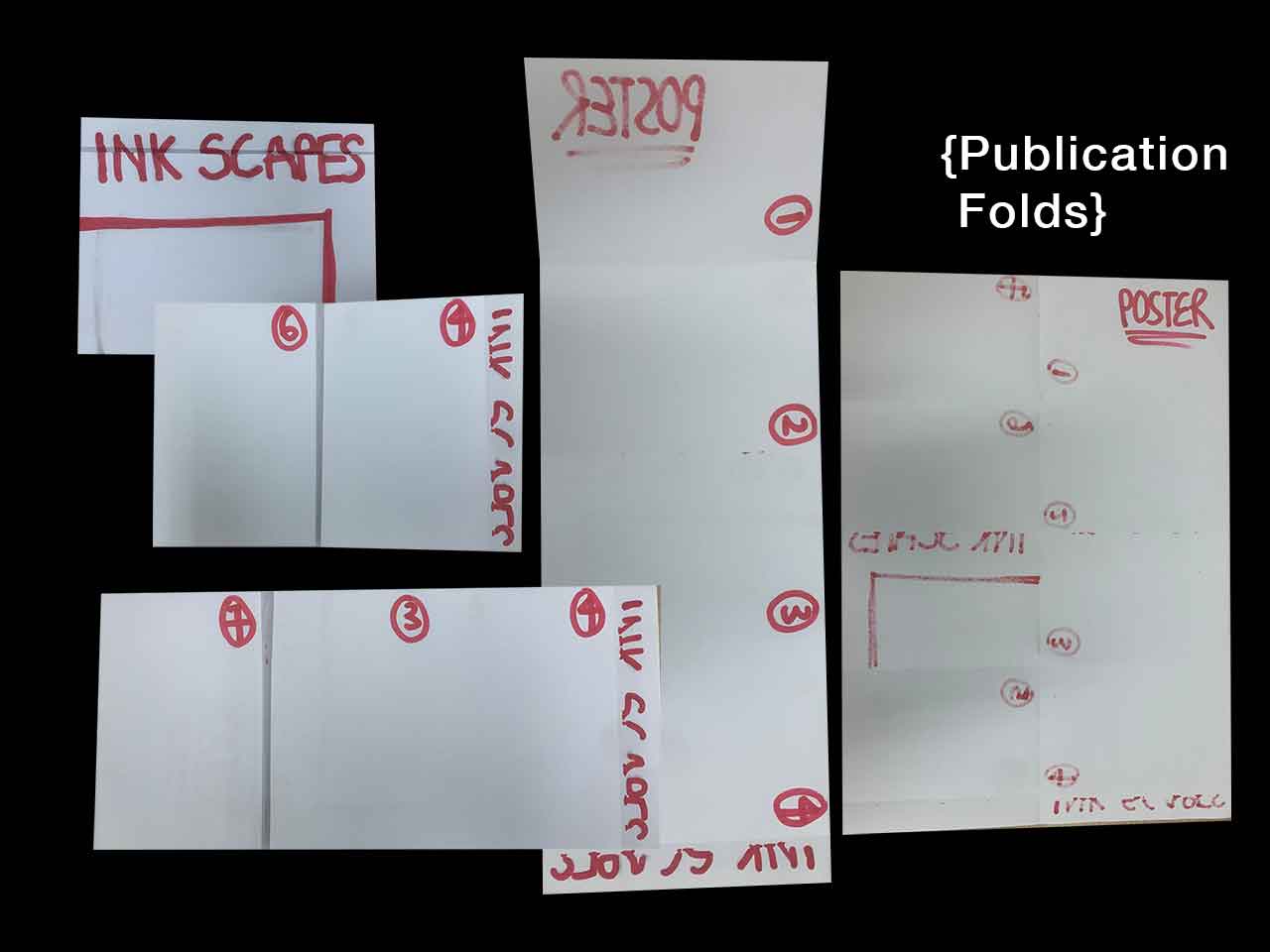Findings
Our project concept originated during our ideation process when we were deliberating on which topic to choose from the provided briefs. As we jotted down our ideas, we became intrigued by the distinctiveness of our handwriting styles, prompting us to delve deeper into the potential revelations of handwriting. Initially, we explored four ideas—nature, handwriting, human emotions, and music. We eventually narrowed our focus to nature, handwriting, and human emotions, recognizing a common thread that could connect these themes—utilizing a live camera to capture human emotions and handwriting simultaneously.
Through subsequent research, we uncovered that handwriting carries significant clues about emotions; for instance, a leftward slant may indicate feelings of depression or anxiety, whereas a rightward slant may suggest confidence and optimism. It's an exploration of the human experience itself, delving into the profound connection between emotional states, personal expression, and the medium of writing. It blurs the lines between communication, expression, and art, offering viewers a glimpse into the intricate relationship between our inner world and the physical traces we leave behind.
Our project transcends the mere visual representation of words on paper; it is a holistic exploration of the human experience. It seeks to unravel the intricate connections between emotional states, personal expression, and the act of writing itself. In essence, it blurs the conventional lines between communication, expression, and art. By inviting viewers to witness the interplay between our innermost feelings and the tangible imprints we leave behind, our project offers a unique glimpse into the profound relationship between our internal worlds and the external expressions we share with the world.
Insights we gained
In our project, we are investigating the intriguing intersection of handwriting, emotions, and technology. Our initial exploration delves into the realm of graphology, an art form that scrutinizes handwriting to reveal insights into individuals' moods. We collect a variety of handwriting samples, closely analyzing the strokes, spacing, and even considering the auditory element—the sound of the pen on paper. Surprisingly, the speed of writing, captured through this auditory aspect, proves to be a valuable clue in deciphering the writer's mood.
Shifting our focus, the second phase of our investigation delves into the emotional subtleties present in handwritten letters. By sharing personal experiences, the writer underscores how emotions such as anger or frustration distinctly manifest in our writing. Notably, we undertake the intriguing task of transforming handwritten words into asemic writings. For instance, asemic writing for anger may appear sharp and chaotic, with thin strokes, while calm asemic writing maintains an abstract format reminiscent of a different language.
Lastly, our project takes a creative leap by generating asemic writing through technology. By merging a microphone sensor with computer programming, we convert spoken words into unique artworks with interactive p5js visuals. Tailored for exhibitions, this innovative fusion of technology and art encourages active audience participation, presenting a fresh perspective on expressing emotions through the seamless integration of computing and human interaction. This journey not only uncovers the concealed intricacies of handwriting and emotions but also introduces exciting possibilities for creative expression.
Design decisions
We opted to showcase our project in an exhibition space, utilizing projection to present our visuals and complementing it with a publication to bolster the narrative of our endeavor. The color palette we employed is contingent on the depicted mood, where anger is characterized by intense reds and dark hues, calm exudes neutral and warm tones, energetic bursts with vibrant primary colors, and anxiety is represented by darker, unsettling shades such as deep purple or dark green. This color selection is a collective and subjective interpretation of emotions, augmented by the universally recognized meanings associated with colors.
Our overarching aesthetic vision for the publication, exhibition space, and code revolves around asemic handwriting. The unpredictable nature of asemic handwriting, coupled with the scribbles generated through our code, contributes to a grunge-inspired look and feel for our project.
The interactivity of the exhibition is a crucial aspect of our presentation. Our project translates these emotional discoveries onto a large canvas, offering an interactive experience for viewers. By pressing buttons on a computer, visitors can engage with and explore different moods and emotions, triggering visual and audio changes. This interactive element enhances the viewer's immersion in the project, allowing them to actively participate in the emotional journey we've curated.
Challenges
Encountering challenges is a natural aspect of undertaking tasks, contributing significantly to our learning and personal growth. Teamwork, likewise, introduces its own set of hurdles. Initially, our project confronted some difficulties as we grappled with aligning our individual work paces. However, through open communication and discussion, we successfully smoothed out our coordination, realizing that effective communication was important in helping each other to understand our differences.
Transitioning to the project itself, we encountered various hurdles. Attempting to capture the pressure applied to the pen tip posed a challenge due to the absence of suitable equipment or code. Additionally, integrating our visuals with real-time data reflecting a person's mood via a webcam proved challenging. The dilemma arose from our existing dataset, and implementing real-time responsiveness would have significantly altered the project, potentially diminishing the unique charm of handwriting. Consequently, we opted to discard the webcam concept and refocus on the project, treating handwriting as a medium with archived data.
The challenges extended to exporting our visuals and finalizing our project. However, the most significant obstacle emerged during the process of explaining our narrative. It became apparent that our project's clarity may have suffered during discussions, leading to feedback that left us perplexed. The central question became, "Why should people find our project compelling?" To address this, we took a step back, revisiting our work and diligently searching for the right language to articulate the essence and concept of our project before proceeding further.
Upon reassessing our narrative strategy, we settled on the following: In our progressively digital era, the act of handwriting is becoming increasingly rare, yet it persists as one of the most powerful means of expressing human emotions. Our project represents a thorough exploration of the realm of handwriting, where the subtle intricacies in each stroke unveil an individual's emotional landscape. Breaking away from the constraints of conventional writing, our project adopts asemic writing as the canvas for our data analysis. Asemic writing transcends linguistic boundaries, functioning as a responsive medium that dynamically interprets the subtleties and intensity inherent in the act of writing.
Each stroke carries the power to express, create, and inspire—a timeless dance of the human spirit.

Feedback
Initially, we received feedback that incorporating a web camera lacked purpose and introduced confusion due to glitches. Consequently, we removed it, focusing on crafting visuals based on mood.
We consistently received feedback highlighting the intriguing nature and substantial potential of our idea but noted occasional uncertainty about its purpose. After refining, the final presentation highlighted that the project revolves around a college of visuals experimentation that represents various emotions, moving beyond an archive to embrace generative aesthetics.
Additionally, there was a challenge for the audience to grasp the transition from handwritten notes to asemic writing. Suggestions were made to clarify this transition and provide insights into the rationale behind categorizing visuals based on specific emotions. For instance, explaining why visuals with purple and orange hues are designated as representing energetic emotions. Post-feedback, we acknowledge opportunities for improvement, suggesting dissecting strokes for asemic characters and implementing more analytical distinctions in our visuals.
Achievements
Achievements encompass not only project success and vital contributions but also the lessons learned and unused visuals.Throughout our project, we sharpened our skills in time management, interpersonal communication, and coordination, fostering a synergistic team dynamic. Delving into emotions through visualization revealed diverse perspectives within the team, promoting a deeper understanding and collaboration.
A significant outcome was our tangible results manifested in visually striking creations born from bold experimentations using p5js and touch designer. These visuals showcased our collective creativity and innovation.
Crucially, our collaborative journey led to a profound understanding and acceptance of each other, bridging differences. The pinnacle of our efforts materialized in a comprehensive publication and projection mapping, transforming our work into an engaging exhibition space. Our project transcended a mere endeavor, evolving into a collaborative masterpiece symbolizing the harmonious blend of diverse talents and the acceptance of each member's unique contributions.











